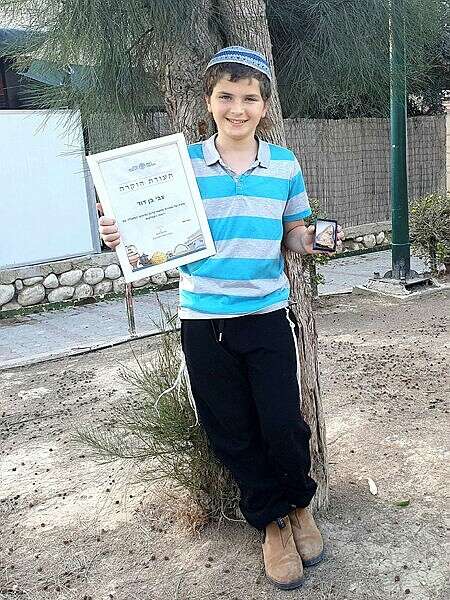A boy walking in the Besor River found a figurine of a topless woman • The estimate: used as a fertility mascot in the 5th century BC
A rare figurine of a woman was discovered in the Negev
Photo:
Israel Antiquities Authority
Fifth century BCE:
A few weeks ago, 11-year-old Zvi Ben-David from Be'er Sheva was walking with his family in the area of Nahal HaBesor, when he suddenly caught sight of an unusual object. Chest wearing a scarf.
His mother, Miriam Ben-David, a mentor in her profession, understood that the find was ancient and important and contacted Oren Shmueli, an archaeologist in the Western Negev sub-district at the Israel Antiquities Authority.
It later turned out that this was a unique figurine from the biblical period, from about 2,500 years ago, which was probably used as a mascot to protect children or increase fertility.
Only one figurine similar to the one that was uncovered is known to the state treasury, which was also located in the northern Negev.
The mother and son handed over the statuette in favor of research and a shift in state treasures.
In addition, the little deer received a certificate of appreciation from the Antiquities Authority for discovering an act of good citizenship.
Shmueli and Debbie Ben-Ami, curators of the Iron Age and the Persian period at the Israel Antiquities Authority, noted:
It appears to have been used in the fifth and sixth centuries BCE, at the end of the Iron Age or the Persian period, the end of the First Temple period or the Return to Zion period. "The features of her face are schematic and her nose is prominent. The woman's chest is exposed, and her hands are folded under the breast."
They added: "Pottery figurines in the form of bare-chested women are known in Israel from various periods, including the First Temple period.
They were common in homes and throughout the living space, similar to today's hamsa, and were probably used as amulets for protection, luck and abundance.
It should be remembered that in ancient times, the science of medicine was not developed: mortality among infants and children was very high, about a third of the babies born did not survive.
There was not always an awareness of hygiene, and of course there were no fertility treatments.
In the absence of advanced medicine, the importance of amulets as a source of hope and seeking help was central. '
The researchers emphasized that "the good citizenship of the child Zvi Ben-David will allow us to better understand the rituals that were practiced in biblical times and the human need inherent in man for the material representation of human figures."

